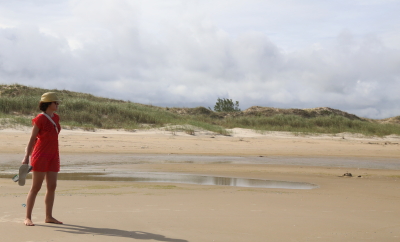
Parenting
The Strange Situation
There was an experiment devised by Mary Ainsworth in the 1970’s that has shown itself to be a reliable way to assess attachment styles between infants and their primary caregivers. This method is called the Strange Situation Protocol. It is quite Freudian in the respect that it places heavy emphasis on interactions between child and caregiver from the get go, and that early relationship determine adult personality and behavior.
In the Strange Situation the mother and her infant (aged between 12 and 20 months) are observed interacting with one another in a room filled with toys for about twenty minutes. The eight steps listed below are enacted during that time:
1. Mother (or other familiar caregiver) and baby enter room.
2. Mother sits quietly on a chair, responding if the infant seeks attention.
3. A stranger enters, talks to the mother then gradually approaches infant with a toy. The mother leaves the room.
4. The stranger leaves the infant playing unless he/she is inactive and then tries to interest the infant in toys. If the infant becomes distressed this episode is ended.
5. Mother enters and waits to see how the infant greets her. The stranger leaves quietly and the mother waits until the baby settles, and then she leaves again.
6. The infant is alone. This episode is curtailed if the infant appears to be distressed.
7. The stranger comes back and repeats episode 3.
8. The mother returns and the stranger goes. Reunion behavior is noted and then the situation is ended. (http://www.en.wikipedia.org/wiki/Attachment_measures)
Based on these interactions Ainsworth observed various types of attachment that have been validated in countless other studies. These styles seem to be directly related to the caregiver’s personality and interactions with her baby. The attachment styles are secure attachment, ambivalent-insecure attachment, avoidant-insecure attachment, and disorganized attachment. As you have probably already guessed the securely attached infant has the most favorable outcomes in life and develops a personality that allows for healthy romantic relationships and a generally happy existence. We are not discounting the role that genetics play, nor that people can change the course of their lives and personalities at any time in their lives. I see it happen all the time and it’s why I love psychology. Being human is a complicated interplay between genetics and environment.
But this leads to the obvious conclusion that you’ve got to do everything in your power to make the environment of your infant conducive to mental health and well-being. This piece is designed specifically for those thinking about having a baby or in the process of having one because we have empirical proof that parents unconsciously pass on a great deal of information about life and relationships from the second their babies are born. There is no bluffing at this early stage. You can’t say the right things or go through the motions of what you think a good mother would do. The developing infant sees through all of this and picks up on communication and attachment patterns at a fundamental level that are impossible for you to manipulate or hide. You consistently interact with your whole being in a way that fosters secure attachment or you don’t. Before bringing your child into the world you’ve got to have the courage to look deeply at your own life and seek professional help if you suffered trauma, emotional abuse, physical abuse, or sexual abuse in order to be in a position that allows you to foster secure attachment.
We will briefly talk about the four types of attachment that are observed in the Strange Situation. Securely attached infants feel confident exploring their surroundings because they know there is a safe base to come back to. They become visibly upset when their caretakers leave and are visibly happy upon their return. They can be comforted by the stranger but clearly prefer their caregivers. You can see that in this primary relationship there is a solid foundation of love and trust. This sense of security, paradoxically, gives children the courage and sense of self necessary to confidently venture out into the world. Parents of these types of children play and interact with them a great deal in a loving way. They respond quickly to their needs and are clearly available to them.
Children with ambivalent-insecure attachment tend to have a strong mistrust of strangers. They are also visibly upset when the caretaker leaves the room, but upon her return they do not show signs of happiness. In fact they might ignore the fact that the caretaker has reentered the room, or will refuse comfort, or even be aggressive towards her. As you can probably guess parents of these types are not consistently available. The infant does not sense a solid foundation of trust.
Those with avoidant-insecure attachment don’t show a visible preference between their caregivers and strangers. They don’t seek out encouragement, support, or comfort from their primary caregivers. In short they avoid contact. They might not mind it but neither do they actively ask for it. These caregivers do not respond appropriately to their child’s basic emotional and physiological needs and avoid situations when they are supposed to, like when the baby needs its diapers changed or is hungry.
The final style is disorganized. This one is is linked to abusive parenting or to inconsistent parenting. One prevalent theory is that the caregiver is a source of danger and anxiety for the child while at the same time the source of safety and security, so an insoluble dilemma is created that affects the sense of self at a core level. There is also ample evidence to suggest that the disorganized style is a precursor for many psychopathologies including anti-social behavioral disorder, which all serial killers have. Obviously an infant can have disorganized attachment and turn out just fine. At any rate their behaviors in front of their caregivers are described as dazed. They might seem apprehensive or frightened, and they do not really show a set pattern of behavior like the other types.
This piece is not meant to scare or to judge. Parenting is a noble endeavor and by choosing to have a child you are adding another member to the river of human history. There is no such thing as perfect parenting and being human means making mistakes. The point is that good parenting starts from the second a child is born and having the courage to look inwards and improve your own sense of well-being will pay huge dividends for your child as you become better equipped to offer a loving, supportive environment that fosters secure attachment. All of these attachment styles are a clear reflection on your own attachment style that you learned as an infant, and you will pass this style along to your child unless you actively put a monkey wrench in the process.




